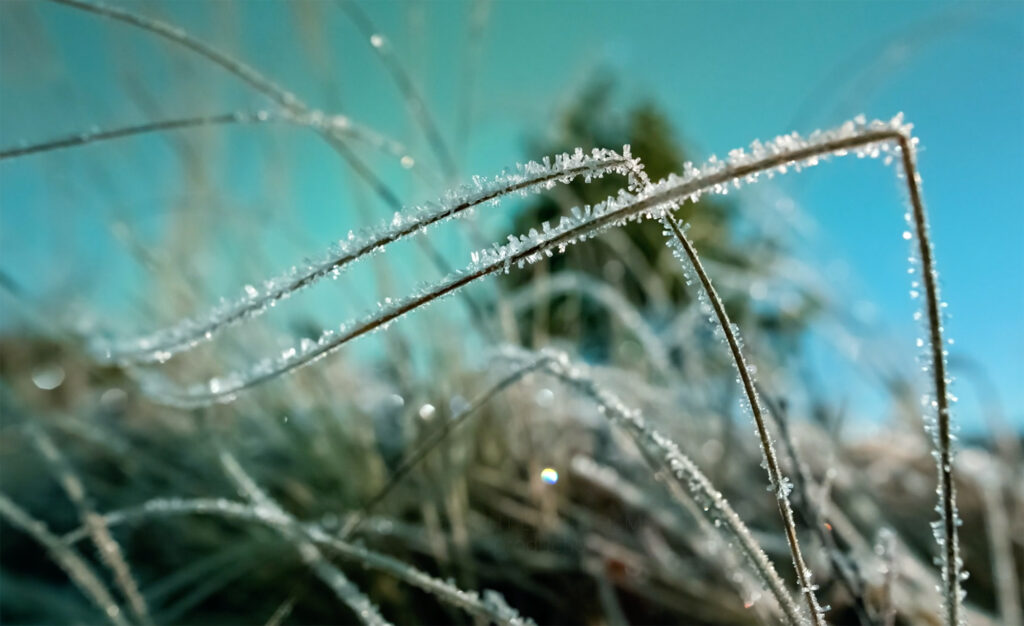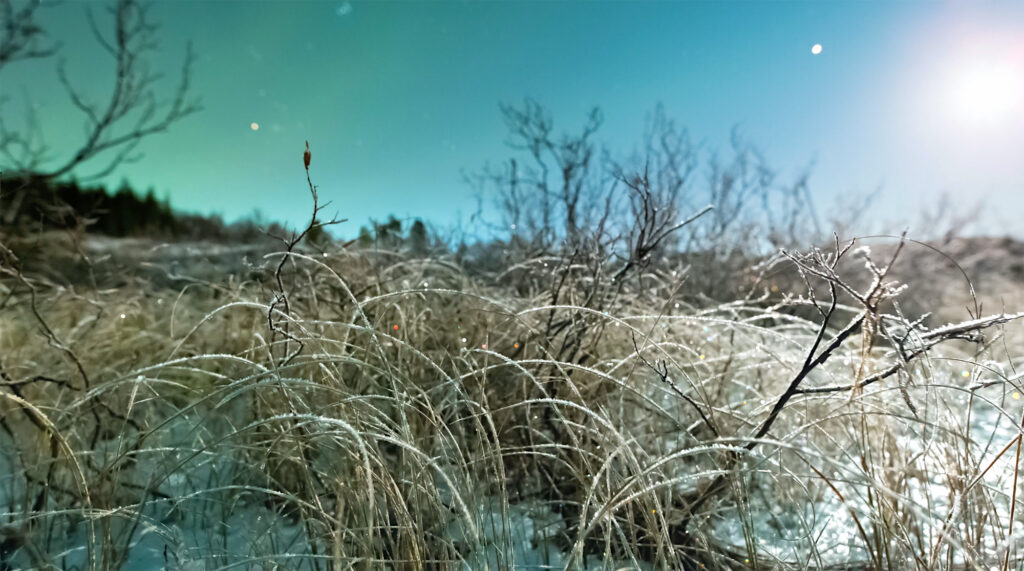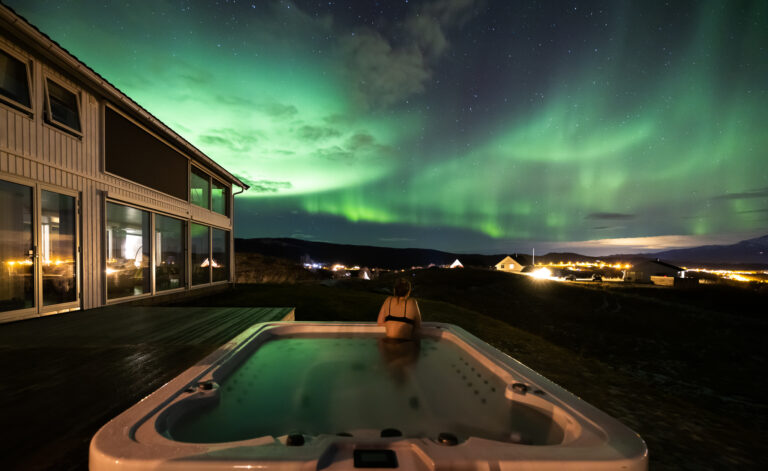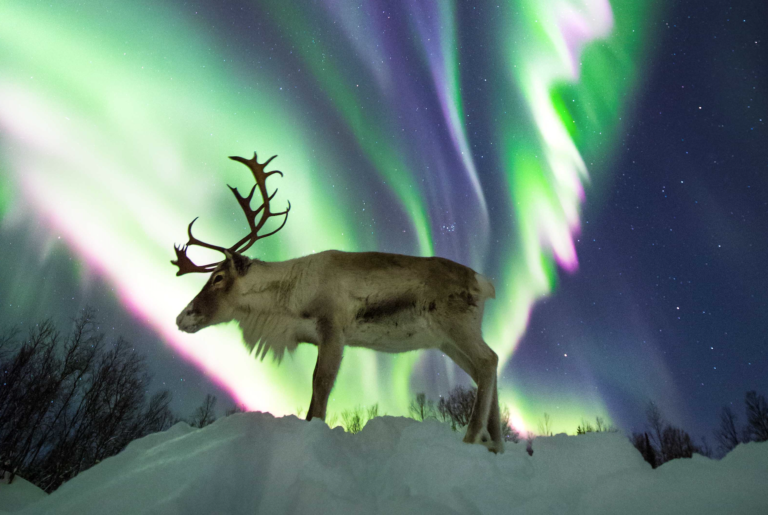The return of polar nights over Senja

Credits: Adrien Mauduit
The return of polar nights over Senja: For nearly two months, Senja island is plunged into the darkness of the polar nights. It’s quite hard to imagine not to see the Sun for that long time. Yet, this period of the year dear to inhabitants of the island is far from being dark. Literally!
The polar nights are something of the north- well, and the south as well. At the north pole, the Arctic circle is an imaginary line that defines the limit of the existence of polar nights in the winter and midnight Sun in the Summer. At roughly 67 degrees N of latitude, being right ‘on’ the Arctic circle means that you will experience one night, e.g. at the winter solstice, where the Sun never rises over the horizon.

Credits: Adrien Mauduit
The further north you go from that line, the more days you will experience the phenomenon. If you were to stand right over the geographic north pole, you would have to endure six full months of not seeing the Sun in the sky.
Senja island lies at about 69.3 degrees north. In other words, it’s roughly 250 km north of the Arctic circle line. Technically speaking, the Sun completely disappears under the horizon on November 30th, never to reappear again until January 13th.

Credits: Adrien Mauduit
In reality, the sharp mountains surrounding the island make this period last longer, especially if you live in the northern fjords of Senja. The mountain tops do catch the red light from the grazing Sun, but it’s still physically not visible. To those who are not hiking, that is!
Despite popular belief, Senja is not far enough north to get total darkness during a full day, even at the winter solstice. At solar midday, when the Sun is at its southernmost position below the horizon, it never ventures lower than 6 degrees.
It means that the type of twilight we get at the brightest is civil twilight. It usually lasts for 2-3 hours, after which it slowly transitions into a nautical twilight, astronomical twilight and eventually full nighttime.

Credits: Adrien Mauduit
Even though this time of the year might seem bleak for someone who is not used to it, Norwegian people have leant to make the most out of it. Indeed, there is actually a very special light that you can only get then. When the sky clears up, the cold invades the valleys, mountains and lakes and forms hoar frost everywhere.
Around midday, the pastel colors in the sky reflect and contrast with the pure white of the ice crystal deposited on grass, branches, tress, rocks and houses. During these few elusive hours of winter wonderland atmosphere, many people get out and go for walk, exercise or just get outside.

Credits: Adrien Mauduit
Nonetheless, with all the long hours of darkness surrounding the polar nights, it’s the best time of year to experience the night lights in their full glory. Whether you’re passionate about the starry night sky or the aurora borealis, the nights in the north are far from being dull.
Speaking of aurora, scientists actually estimate that as of December 2019, we are out of solar minimum, that trough of low solar activity giving very few aurora shows back on Earth. This entails an increase in aurora sightings starting in 2020. As a matter of fact, we have treated to some absolutely gorgeous auroras this year. Now that the polar nights are here, these are visible even longer.
The best is to watch the aurora under the moonlight, as the bright glimmer makes all the frost crystals sparkle. With the whole landscape being covered in white, the brightest aurora can actually paint everything green. And with solar maximum drawing nearer, those bright shows are getting more and more frequent.

Credits: Adrien Mauduit
Senja island is called ‘Norway in miniature’ and possesses all the types of landscapes from the country. Even though Norway isn’t best known for its large flat plains filled with pine trees like Lapland, Senja still harbors some quite extensive valleys and flatter areas where cold can build up.
Sometimes, the temperature inversion in the eastern part of island can produce lows of 35-40 degrees below zero at the lowet points of the valley, while it is barely zero on top of mountains! In addition to the high humidity streaming along the rivers at the bottom, it allows for this differential frost depositing, which is quite spectacular.

Credits: Adrien Mauduit
All in all, the polar nights are such an amazing time to come and visit Senja island if you want to experience northern Norway. At the Aurora Borealis Observatory, we are located right at the edge of a valley with the largest river on the island, creating absolutely insane winter wonderland conditions when there is frost.
The flat landscape also creates a microclimate that clears up the sky on most nights, allowing our visitors to enjoy the aurora with an incredible success rate!
So roll on those amazing long aurora nights followed by frosty mornings and pastel colors! You’re more than welcome to stay with us to enjoy this!

Credits: Adrien Mauduit
Enjoy The return of polar nights over Senja !




